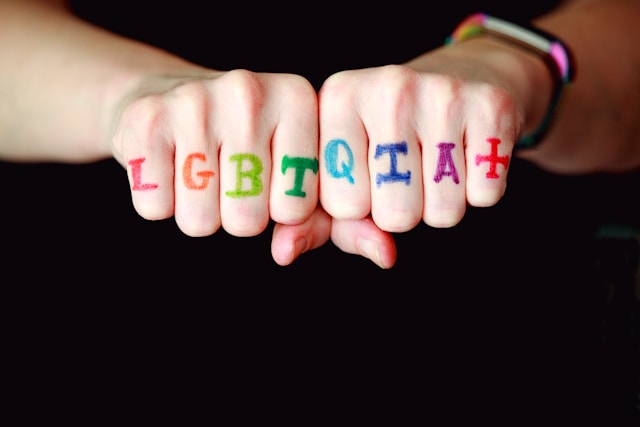The Evolution of a Movement
The landscape of Lesbian, Gay, Bisexual, and Transgender (LGBT) rights has undergone significant transformation over the past several decades. Initially marginalized, the LGBT community has progressively moved towards the center of social and legal acceptance in many parts of the world. This shift reflects not only changing societal attitudes but also the hard-won outcomes of relentless advocacy and heightened public awareness. From the riots at Stonewall in 1969 to the sweeping legalization of same-sex marriage, the journey of the LGBT community is a testament to the resilience and tenacity of its members and allies.
The acronym itself has expanded over the years, now often represented as LGBTQIA+ to include a broader spectrum of sexual orientations and gender identities. This inclusivity underscores a more profound understanding of the community’s diversity and the distinct challenges faced by its various subgroups. As we explore the milestones of this movement, it’s crucial to recognize the ongoing struggles that persist, framing the narrative of a community still fighting for unequivocal acceptance and equality.
Legal Landmarks and Societal Shifts
The legal framework surrounding LGBT rights has seen groundbreaking changes that have paved the way for greater equality. Landmark rulings, such as the U.S. Supreme Court’s decision in Obergefell v. Hodges, which legalized same-sex marriage nationwide in 2015, have marked pivotal moments in the movement. These legal victories are crucial, as they not only grant rights and recognition but also help shift public opinion by framing LGBT rights as fundamental human rights.
In addition to marriage equality, there have been significant advancements in anti-discrimination laws in the workplace, housing, and public accommodations. However, legal progress is not uniform across the globe. While some countries celebrate progressive victories, others still uphold laws that criminalize LGBT existence, highlighting the disparate global landscape of LGBT rights. This dichotomy illustrates the varying degrees of acceptance and the influence of cultural, religious, and political factors on the legal recognition of LGBT individuals.
The Role of Culture and Media
Media representation has played a pivotal role in shaping public perception of the LGBT community. From television and film to books and the arts, increased visibility of LGBT characters and stories has contributed to normalizing these identities in mainstream culture. Shows like “Will & Grace” and “Modern Family” broke new ground in the late 20th and early 21st centuries by portraying LGBT characters in everyday contexts, contributing to a shift in societal attitudes.
Moreover, social media has emerged as a critical platform for advocacy and community building, allowing for the widespread sharing of personal stories and the mobilization of support for LGBT rights. The impact of these cultural tools cannot be understated; they have not only educated the public but also provided a voice to individuals who might otherwise remain marginalized. As culture continues to evolve, its influence remains a powerful force in both reflecting and driving changes in societal norms.
Modern Tools and Platforms Supporting Diversity
Amidst the strides in social and legal acceptance, modern digital platforms have also played their part in supporting diversity and inclusion. The Pin-Up app, launched in 2016, is designed to provide a superior experience to users interested in betting and casino games. It features an intuitive and user-friendly interface that simplifies navigation for both newcomers and seasoned players. With more than 9,000 games sourced from 70 different providers, it offers a broad range of options to suit all tastes. To easily access the application, users can download it by clicking the ‘Pin Up indir‘ button on the official website. Such platforms not only entertain but also offer opportunities for the LGBT community to engage in spaces that are inclusive and affirming.
Challenges and Continued Advocacy
Despite significant advancements, the LGBT community continues to face considerable challenges. Discrimination, violence, and exclusion are still prevalent in many societies. Transgender individuals, in particular, face higher rates of violence and discrimination than other members of the LGBT community. Moreover, the intersection of race, gender, and socioeconomic status adds layers of complexity to the injustices faced by LGBT individuals, requiring a nuanced approach to advocacy and policy-making.
Activism remains crucial as new challenges emerge, such as the debates over transgender rights in sports and military service. Advocates and allies play a vital role in addressing these issues, pushing for inclusive policies, and educating the public. The fight for equality is far from over, and continued efforts are necessary to ensure that the rights and dignity of every LGBT person are respected and protected.
Hope and Resilience
The future of LGBT rights holds both challenges and promise. As the community continues to grow in visibility and cohesion, there is a hopeful outlook for the extension of further rights and societal acceptance. The resilience demonstrated by the LGBT community suggests a continued trajectory towards equality, but this path requires the sustained commitment of both the community and its allies.
Education, advocacy, and legislation will be the pillars of future successes. Each victory not only enhances the lives of LGBT individuals but also enriches societies by fostering a culture of inclusivity and respect for diversity. As we look forward, the lessons learned from past struggles will undoubtedly guide the ongoing journey towards full recognition and equality for all.
